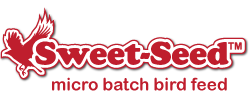Location, Location, Location: Where You Should Be Putting Your Feeders.

Every backyard birder wants to watch birds visiting their feeders, but how should you position your feeders so you don't miss any great views? Whether you just want to enjoy the birds, identify every feathered guest or try your hand at bird photography, there are easy tricks to ensure you always have exceptional views.
Choose the Right Window for Feeder Watching
Every window in your home will not offer the same views of visiting birds. Choose a window that is wide enough and well positioned for easy viewing, without furniture or heavy drapes that block access to the window. A nearby bookshelf or table to hold a field guide or binoculars is helpful, and the window should not be near outdoor sidewalks or pathways that will regularly disturb the birds. Using blinds over the window can also be a good idea, because you can adjust louvers to watch birds without being in full view yourself, so the birds are less apt to view you as a threat.
Consider Plants and Foliage
Birds feel more comfortable near plants where they can retreat if threatened, and positioning a feeder near suitable cover plants will help birds become regular visitors more quickly. At the same time, a thick plant with heavy branches and leaves can just as quickly obscure your view. Keep feeders in front of plants and foliage, and feel free to cleverly prune plants if necessary to provide a clear view of the feeder. Note that plants may change their appearances throughout the year, however, from new buds and spring blossoms to shedding autumn leaves, and plan your feeder placement for good views in all seasons. Where's the Light?
You will need adequate light to see birds best. Whether you need to distinguish subtle colors and field marks for proper bird identification or are interested in the best light for outstanding photography, it is best to avoid watching birds directly in the sun's path. This means a south-facing or west-facing view will not be ideal, though the sun's angle changes throughout the year and some views can be fine at different seasons. Also consider when birds come to your feeders and how the light changes throughout the day so you can see them most clearly. At the same time, avoid placing feeders in deep shade that will obscure even the most brilliant birds.
Keep It Close
If you want close, intimate views, position feeders less than three feet away from the window glass – or even consider feeders with suction cups that can be attached directly to the glass. This helps minimize the risk of dangerous window collisions, because even if birds do strike the glass that close, they have not been able to build up enough speed for a forceful impact. Close feeders can be especially entertaining for feeding small birds such as hummingbirds or finches, and you will get much better acquainted with them as they come right up to your windows.
Get Bigger Further Away
Feeders positioned farther away in your yard should be placed at least 10-12 feet away from windows to allow birds maneuvering room to avoid collisions. Larger feeders meant for bigger birds are best at those distances, since you will still be able to see the birds clearly. Be sure the feeders are not obstructed by plants, patio furniture or other garden items, and opt for platform feeders where birds can spread out and views will not be too crowded. Take note of ground-feeding areas and bird baths as well, making sure you have good views of anywhere in the yard birds may visit.
Good Viewing Feeder Designs
No matter where you put your feeder, you won't have good views if the feeder itself blocks the birds. Choose clear plastic feeders or open platform or tray feeder designs whenever possible so you can see birds easily. Some mesh feeders also have great viewing structures, and feeders where birds can land on the roof will provide extra perches for easy views. If the feeder has two open sides and two closed sides – as many hopper feeders do – angle the feeder so you can clearly see as much of the perching and feeding area as possible, rather than blocking a side completely from your view.
Feeding the birds is more fun when you can see them well, and it is easy to position your feeders for exceptional views of every hungry bird that comes to visit.
Image by Lisa Hackley
